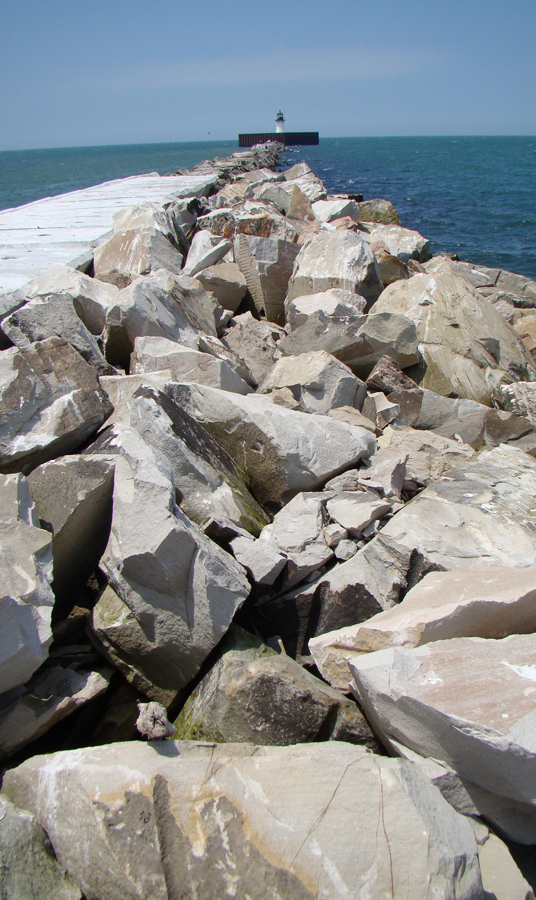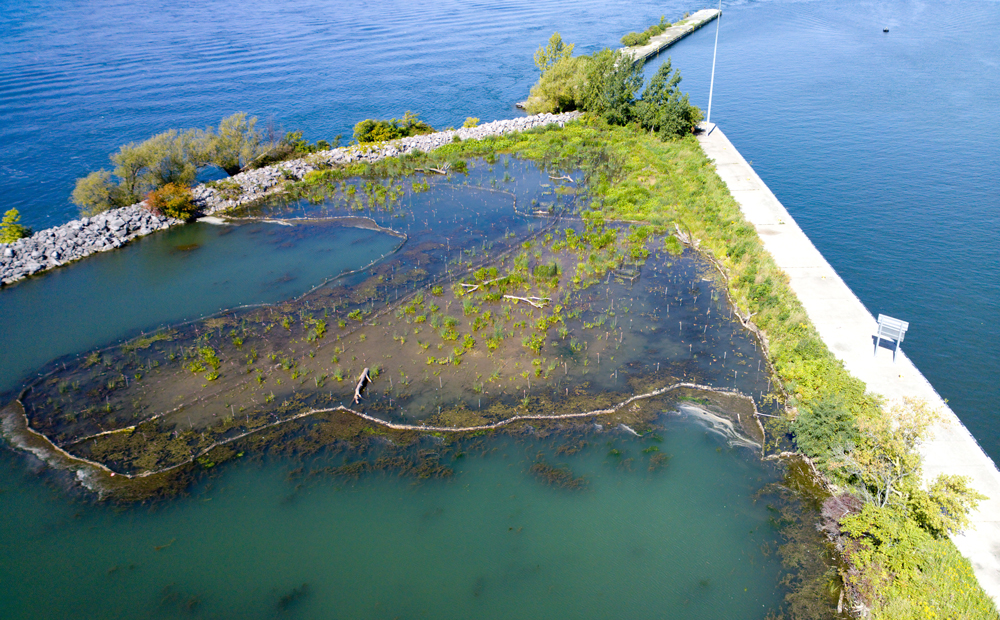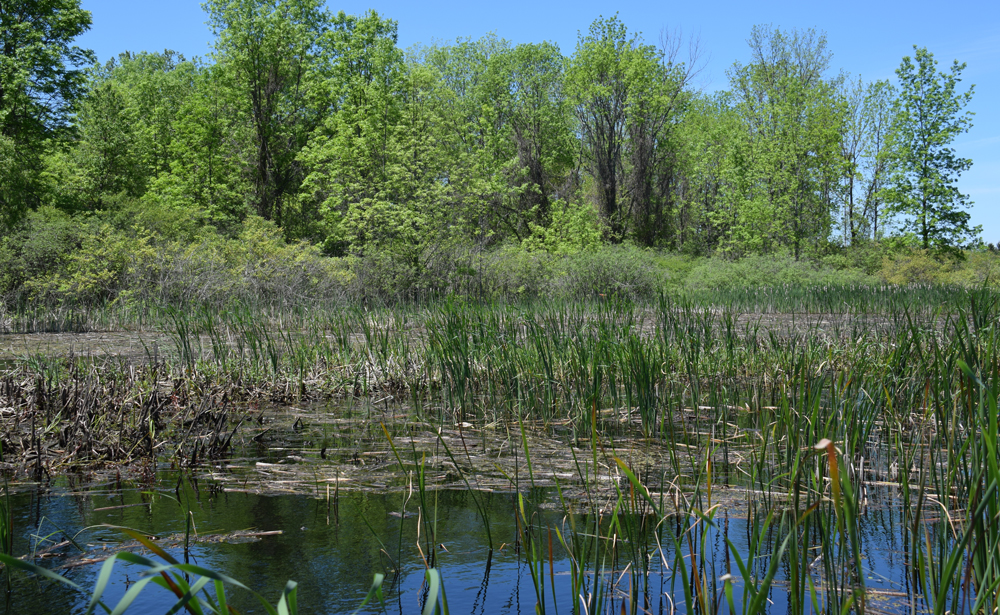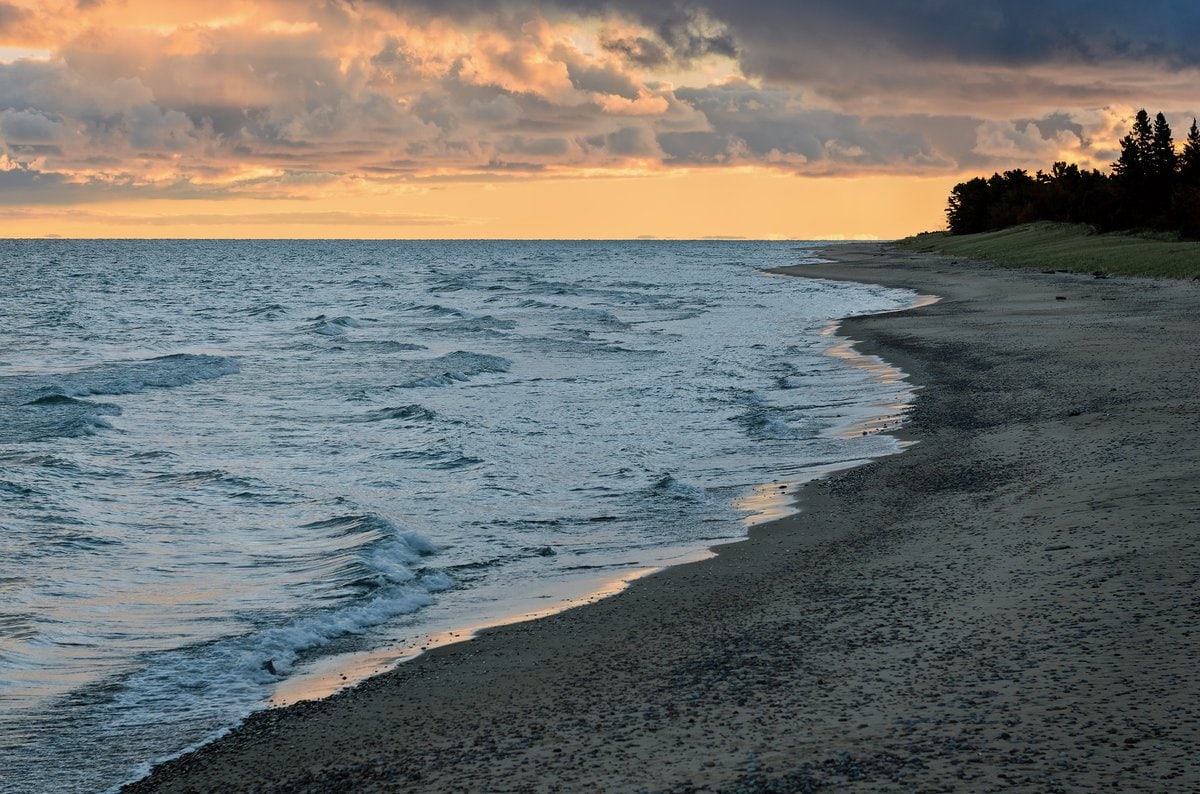This project is featured in Engineering With Nature An Atlas, Volume 1.
Location: Cleveland, Ohio, United States.
The East Arrowhead Breakwater—a rubble mound structure built to protect the entrance to Cleveland Harbor—had deteriorated over time due to wave damage from Lake Erie open waters. Routine maintenance of the breakwater was needed to preserve safe navigation in Cleveland Harbor. The U.S. Army Corps of Engineers (USACE) Engineer Research and Development Center (ERDC) partnered with the USACE Buffalo District (LRB) to design and implement modifications to LRB’s normal breakwater repair procedures at this site in 2012. As an Engineering With Nature demonstration project, this involved adapting the design of the standard concrete toe blocks used for breakwater maintenance. The toe blocks would be modified in shape and surface texture in three different ways to create habitat opportunities otherwise not present for Great Lakes species. After monitoring results were evaluated, shapes and textures found to best serve as habitat to native species were selected to be incorporated more broadly across future navigation repair and maintenance projects. This work was funded through the U.S. Environmental Protection Agency’s Great Lakes Restoration Initiative (GLRI) and managed by the Great Lakes National Program Office.
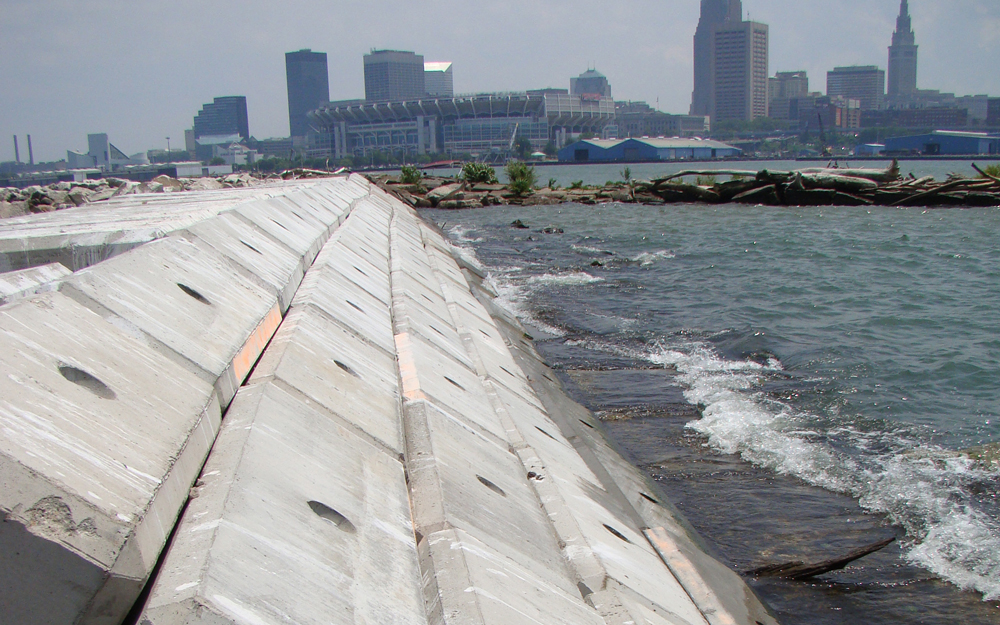
Producing Efficiencies
Seventeen toe blocks were installed and monitored in the repair section. Three separate block modifications were investigated to determine how each would perform as habitat: (1) a protected, indented shelf to serve as a fish refuge and potential spawning area; (2) a dimpled block surface texture to provide invertebrate habitat; and (3) a grooved block surface texture to provide invertebrate and juvenile fish refuge. The grooved block surface was found to work best at adding habitat, regardless of the block’s orientation.
Using Natural Processes
The basic scientific premise is that the existing smooth blocks offered limited opportunity for epifaunal organisms to attach and become established due to lack of protection from currents and waves. Adding crevices and grooves to the surface provided angular and protected areas where better attachment surfaces and some level of protection from hydrodynamic forces was provided, affording organisms opportunities to become established.
Broadening Benefits
The design modifications are producing greater environmental benefits on breakwater structures for invertebrate and fish communities compared to previous practices. These benefits will likely lead to increased recreational fishing opportunities and direct support of local economies.
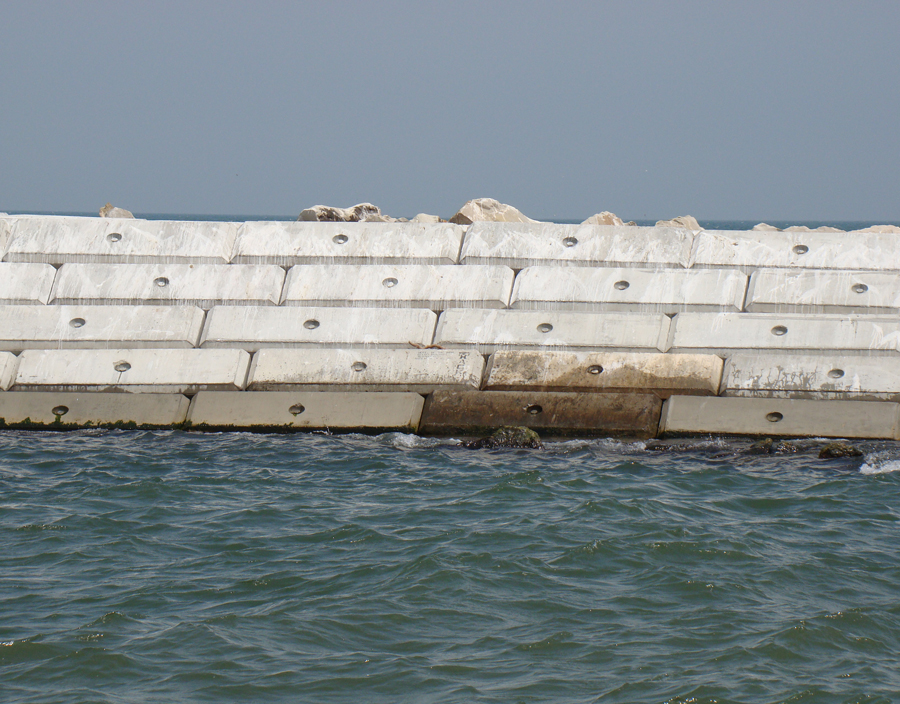
Promoting Collaboration
This project is helping USACE and Great Lakes stakeholders evaluate opportunities for enhancing aquatic habitat in and around similar structures through low-cost measures that might be implemented as part of routine maintenance, scheduled repairs, or modifications.


